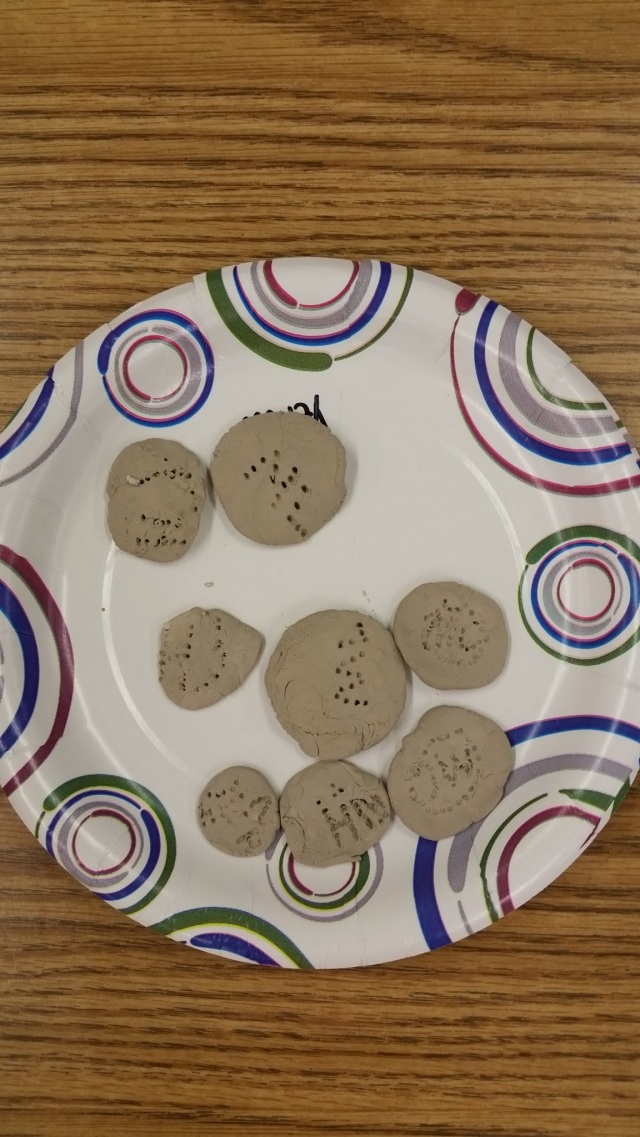Who knew you could learn so much from a pumpkin?
This week, we used pumpkins to integrate almost every subject, but focused on science and math. We learned a lot about the things good scientists do, like asking questions, collecting data, recording findings, and using smart thinking! We approached our study of pumpkins very scientifically. First, we started developing our schema. We did lots of thinking about things we already knew about pumpkins and compared that schema to what we had learned about apples. To help us confirm our previous knowledge, dig deeper, clear up misconceptions, and add new schema, we read From Seed to Pumpkin, Apples and Pumpkins, Seed, Sprout, Pumpkin Pie, The Pumpkin Book, and Pumpkin Pumpkin.





We recorded the things we already knew, wanted to learn, and new learning to a chart. We made observations of the exterior of our class pumpkin using our five senses. We discovered that we could learn a lot just by thinking about what we could see, hear, smell, and touch (we didn’t do any pumpkin tasting, at first). Then we recorded all of the great descriptive adjectives we used to describe our pumpkin. We used what we’d learned to create a life cycle project in which we recorded what we learned about each stage of a pumpkin’s development and its order.
On another day, we began collecting scientific data about our pumpkin. First, we estimated how much our pumpkin weighed. We learned that an estimate is a “smart” guess, or our “best” guess, and uses information we already know to be true. We had some pretty interesting estimates! We learned that a scale is a tool that can be used to measure weight, or how heavy something is. After making our estimates, we tried weighing the pumpkin on our scale, but it wasn’t quite sensitive enough. So, one of our firsties volunteered to be weighed both holding the pumpkin and without holding the pumpkin. We subtracted to find the difference, and found out that our pumpkin really weighed 10 pounds!

Our next pumpkin investigation allowed us to collect data about our pumpkin’s height, weight, and circumference. We learned that a ruler is a tool that can measure objects from a starting point to an endpoint. We could use a ruler or yardstick to measure vertically to find height or horizontally to find width. Once we found our measurements, we recorded our data on a chart and individually on recording sheets. We next wanted to find out our pumpkin’s circumference. We learned that “circumference” is a fancy math word for “distance around.” First, we discovered that we needed a new tool. Our yardstick just wasn’t flexible enough to go around the pumpkin! It might break! So, we brainstormed other ideas until deciding that we could use a piece of yarn, wrap it around the pumpkin, and then measure it with our yardstick to see how long it was. Great! Before that, we made estimates by each choosing a length of yarn that we believed would wrap around the pumpkin without overlapping or having any gaps. We checked and sorted our estimates in groups, and labeled them “too short,” “too long,” and “just right.”

Finally, the moment the students were anticipating: time to cut the pumpkin! We used our senses again to see, hear, smell, and touch (again, no tasting, yet) the pumpkin’s insides. Some of us thought this experience was “so disgusting!” but we learned that scientists are brave and “never say ‘ew;'” instead believing that getting a little messy is worth it, in the name of science!
















While we made observations about the inside of the pumpkin, we also learned about and labeled the parts of a pumpkin and thought about ways they were similar to and different from apples. Both apples and pumpkins have seeds inside, but apples have flesh and pumpkins have pulp (or “plup,” as one firstie called it!), and apples have skin while pumpkins have a rind.
After scooping out all of the pumpkin’s insides and separating the seeds from the pulp, we learned about volume. We discovered that “volume” is a fancy science and math word for “how much water something can hold.” We wondered how much water our pumpkin could hold! We took turns measuring out cups of water and pouring them into the cavity of the pumpkin, keeping track of the number of cups we poured in each time.
Once we had the pulp and seeds separated, we wondered how many seeds were inside our pumpkin (any question that allows us to collect data, right?). The firsties worked together to create groups of ten seeds, counting, circling, and recording as they worked. Once finished, we counted all of our groups of ten, then combined leftover groups into ten, and finally counted by tens to figure out that our pumpkin had 473 seeds inside!












We wanted to use our pumpkin for one last bit of learning about the scientific process. This project is an ongoing one, and likely won’t be completed for a while. We wondered whether or not a pumpkin plant would grow inside of another pumpkin. We already knew that scientists ask good questions, but learned that when trying to answer those questions, scientists make a hypothesis. After a vote, we hypothesized that a pumpkin plant would grow inside a pumpkin plant, if given soil, water, and sunlight.


On Friday, we enjoyed a little baking activity as we read and followed a recipe together to roast the pumpkin seeds we’d saved. YUM!

I can’t wait to see what happens with our experiment!















































































































































































































































































































































